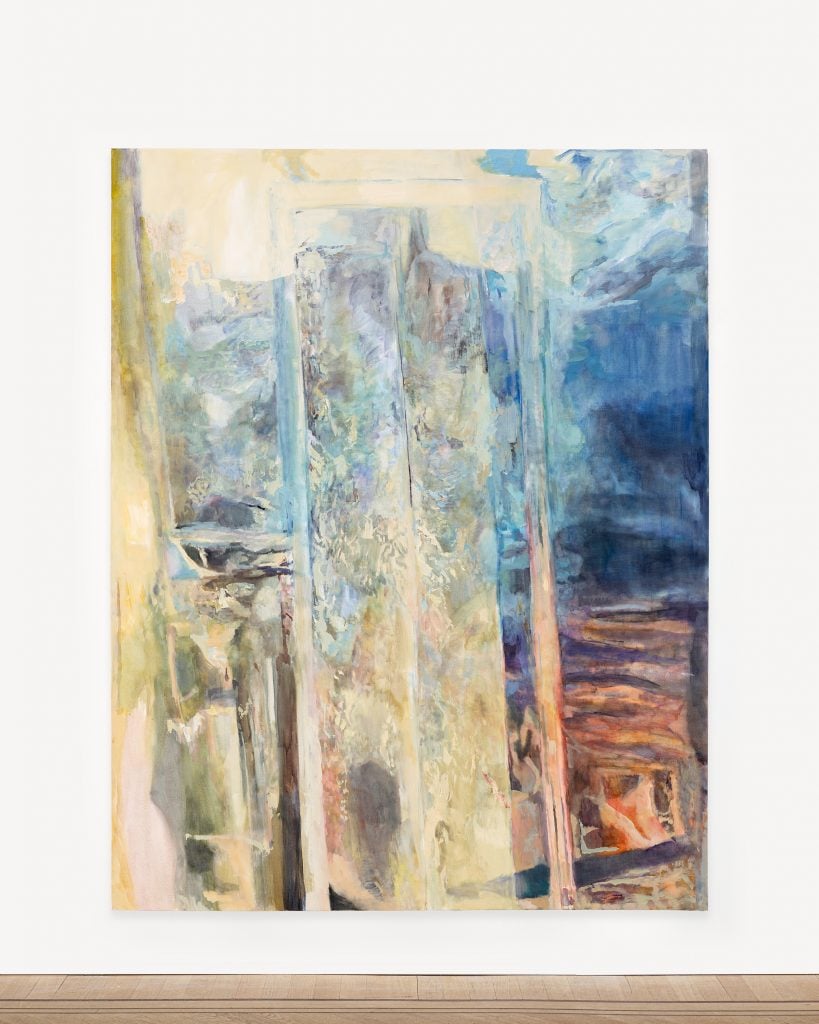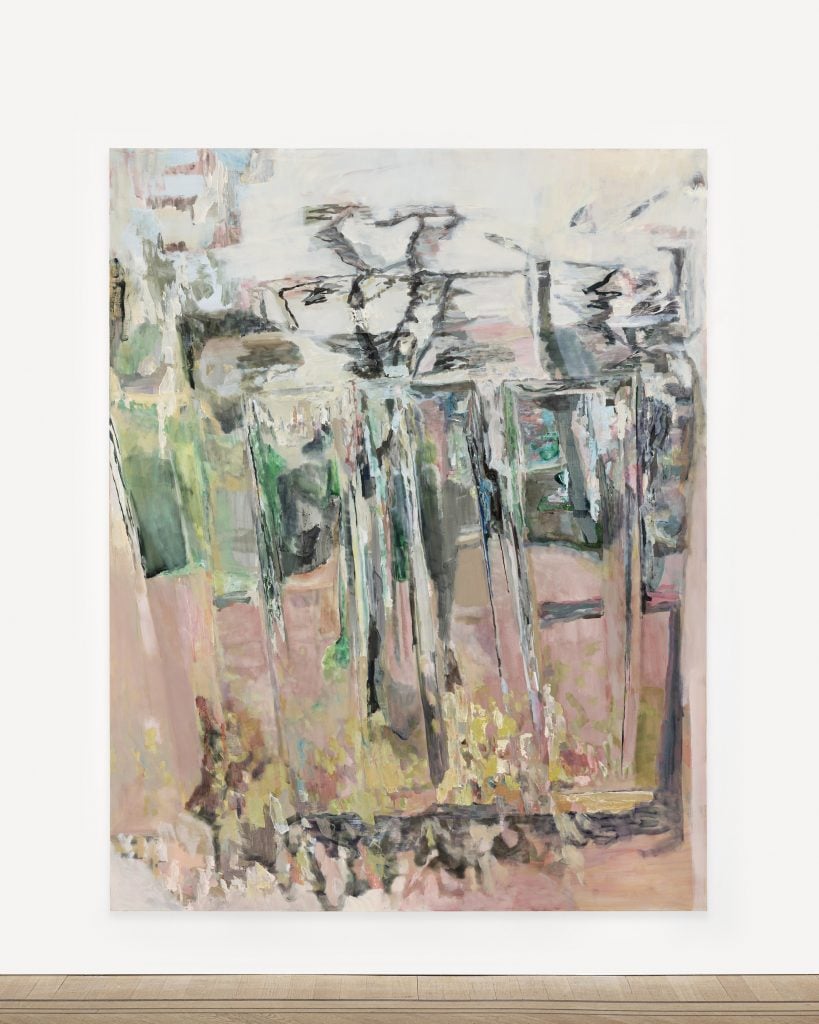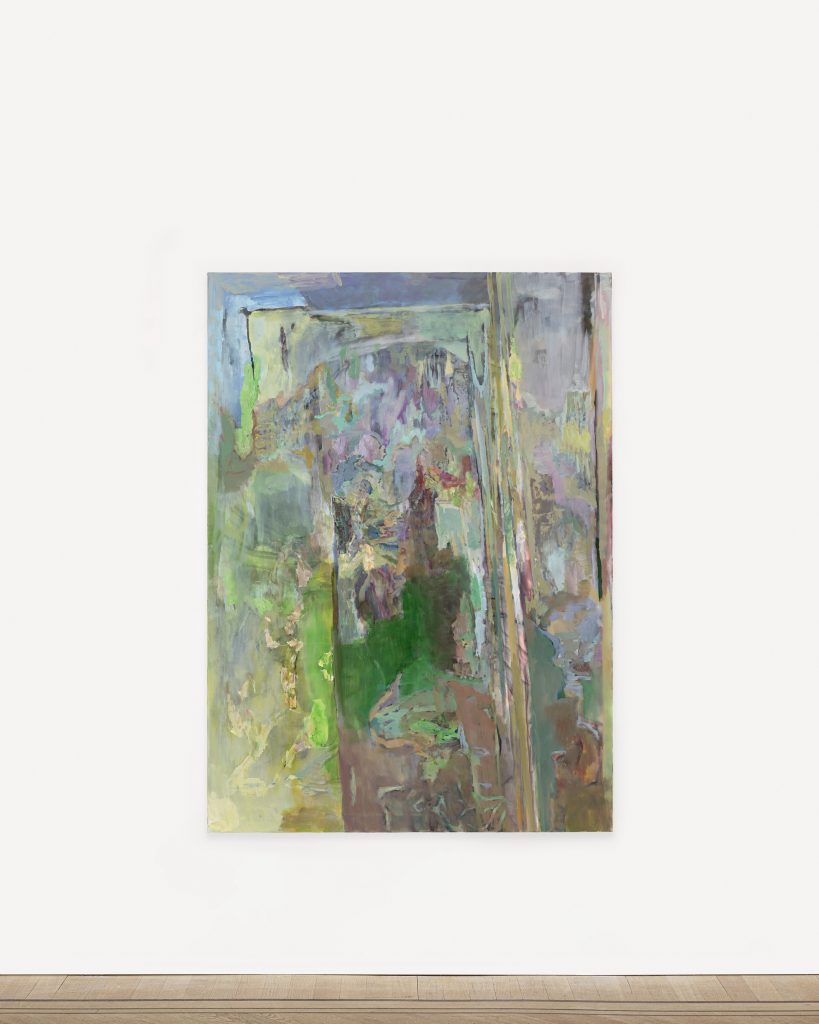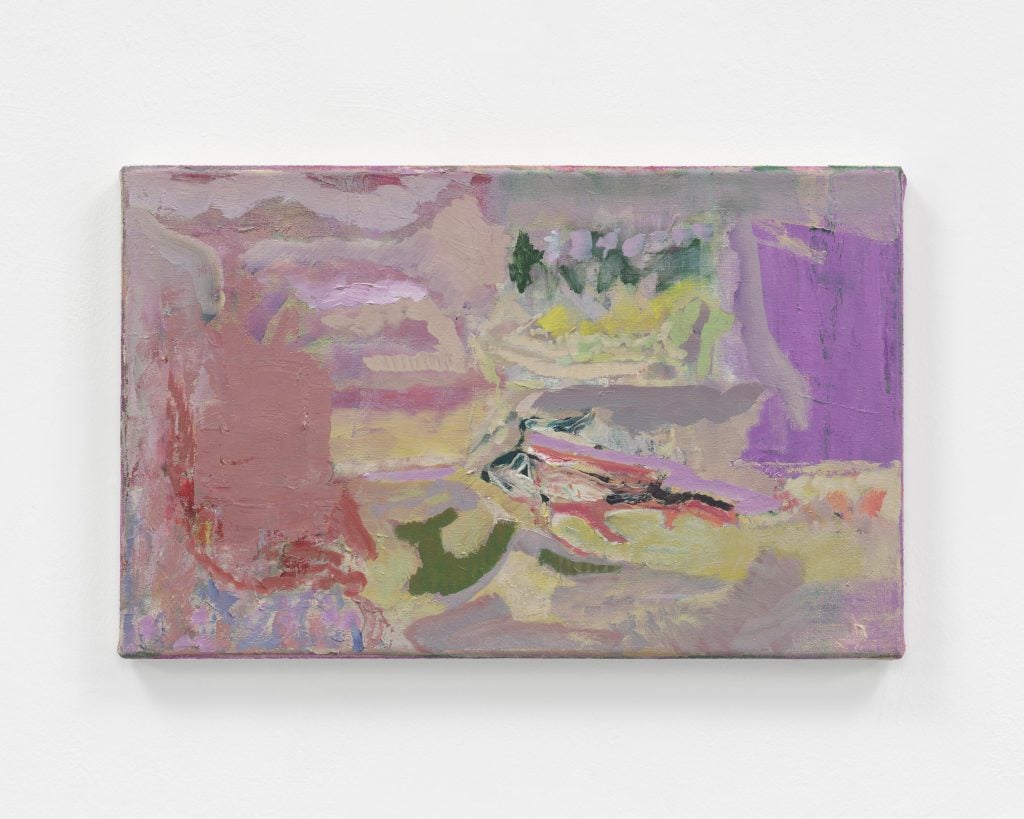british painter Francesca Mollet (b. 1991) has a practice centered on the in-depth study and investigation of the many facets of space, from the built environment to the quality of light and fleeting reflections. Transmuting the surface of the canvas into something that seems malleable and moving, Mollett’s compositions bring forward the subjectivity of perception and function as a site of meaningful exchange between painter and viewer.
Based in London, Mollett obtained her MA in Painting from the Royal College of Art in 2020 and has been the subject of solo exhibitions in the UK and abroad. This week, his solo show “Francesca Mollet: half-time» opens to Grimm GalleryAmsterdam, featuring the artist’s most recent work.
Ahead of the exhibition, we reached out to Mollett to find out more about what’s in store and how the city of Amsterdam figured into his creative process.

Francesca Mollet, Short cut (2023). Photo: Pierre Mallet. Courtesy of Grimm Gallery, Amsterdam, London, New York.
Your solo exhibition with the Grimm Gallery, Amsterdam, opens tomorrow. Can you tell us about the themes of the show?
The show draws attention to a familiar sensation: how reflections divide, multiply and distort images and create a fusion of body and environment. Stemming naturally from an ongoing fascination with the representation of the surface, these paintings deal with dual spaces; a near-surface representation of a doorway along with what is reflected in it. The paintings come from careful observation. In attempting to make what I have noticed visible, their qualities are enhanced or transformed in the painting, moving towards abstraction, translating these relationships into relationships that can be recognized, but not easily named. For me, the show is essentially about perception and how language can transform something by trying to approach it.
What role does the city of Amsterdam play in your recent work or in the idea of place within your practice?
I came to visit the Grimm Gallery in November to see the space, but then left with a new idea of how to approach the exhibition, which I didn’t quite expect! The gates that line the streets of Amsterdam continue the reflection of the canals along their glossy painted surfaces. Acting like water, their suggestive qualities made them a starting point in situ. The French writer Annie Ernaux describes the “I” (I) as “not an identity but a place, marked by human experiences and events” and is linked to the idea that a place could be like an “I”. collective. For me, responding to a place creates the freedom to explore pictorial language. The visual qualities of the subject may contain inherent symbolism or an existing story, and so when you look at the paintings, it’s as if I’m showing all that is visible in its present moment, but behind there is an awareness of what is built into it.
Previously, I have often looked at places where light interacts in a specific way, for example, I have used sites of ancient shafts, caves and tunnels – dimly lit spaces where the entry of light allowed strange shimmers. I also responded to plants, such as phosphorus moss and moths, looking at how their biology affects their movement or indoor light. I like to concentrate on a motif that allows painting to be thought about; maybe not exactly a metaphor, but a kind of context or set of circumstances, in which to frame an idea of what he can do.

Francesca Mollet, Evanescent backs (2023). Photo: Pierre Mallet. Courtesy of Grimm Gallery, Amsterdam, London, New York.
Are there any specific insights or impressions that you hope viewers of the show will take away with them?
I would like the viewer to feel an intensity of connection and potentiality in the things around them. When I leave exhibitions, one of the most empowering feelings is to walk out and feel like I’ve internalized the perception of the artist; you start seeing scenes as if they were paintings – I wish that would happen.
I also hope to convey the idea of a “shimmer”: each painting wants to produce its own shimmer, but it also comes from a shimmer in the world. The shimmer is both a seen visual effect and an immaterial instant, close to the developer.
Can you tell us about how you create your paintings from a technical point of view?
My paintings start off very smooth and fast and then slow down. I start with drawings that help me imagine the painting, from which I sketch a first composition on canvas in charcoal, acrylic or diluted oil. I then begin to explore the marks with oil paint, almost timidly at first. Working on the relationships between the different areas, I look closely at how each passage relates to the next; how movement or texture tells you something about the other. Paintings need time to breathe and accumulate direction. I erase elements from the paintings, leaving an impression or smudge, allowing for more subtle then obtuse changes, I often use a palette knife which has less controllable elements and explore how the texture of color can fade in its intertwining with another.

Francesca Mollet, Reverse liner/shell (2023). Photo: Pierre Mallet. Courtesy of Grimm Gallery, Amsterdam, London, New York.
Conceptually, what does your creative process look like? Do you start with a fully formed idea or is it more intuitive as you go?
The idea has to be substantial for me to start, but it develops in the paint; I would say it’s intuitive and experiential. If I tried to force an idea on something it wouldn’t work, or it would be too literal – it comes from painting and research. Continued reading practice helps develop a better understanding of what I want to do. The sensations and explorations with the novels influence the reflection on the emotional or relational position that I want to create; writers such as Christa Wolf, Jhumpa Lahiri, Mieko Kawakami, Tony Morrison, Fanny Howe and Elena Ferrante.
Where do you most often find inspiration? Are there any artists or movements, historical or contemporary, that have specifically influenced your work?
I turn to specific paints with the desire to create new touches and shapes. These are usually individual practices that share an ability to contain visual surprises in the image. I am often intrigued by how artists have achieved the precise language of each painting, such as Prunella Clough, Susan Rothenberg, Helen Frankenthaler, Varda Caivano, Tomma Abts, Charline von Heyl, Heidi Bucher and Winifred Nicholson. At the moment I am in residence in Turin, so I discovered sculptures by Leoncillo Leonardo and paintings by Gigi Chessa in the local museum. Looking at Marisa Merz’s work, I appreciate the fluidity between domestic and industrial materiality, and find it helpful to see how Renaissance and Byzantine artists influenced her depictions of Madonna and angels.

Francesca Mollet, Halves (2023). Photo: Pierre Mallet. Courtesy of Grimm Gallery, Amsterdam, London, New York.
Is there anything you are currently working on, or hope to work on next, that you can tell us about? Any themes or ideas you’d like to engage with that you don’t have yet?
I am currently in residence in Italy where I came to observe and reflect on fireflies, but I also work from the Po, where the low intensity floods have left beacons on the paths. I’m going on a residency to Scotland in the fall with the Roberts Institute of Art, and we’re currently developing ideas in more detail, but I’d like to study iridescence, something I’ve touched on before but want to explore further.
“Francesca Mollett: half-timeis on view at the Grimm Gallery, Amsterdam, from June 2 to July 22, 2023.
Follow Artnet News on Facebook:
Want to stay one step ahead of the art world? Subscribe to our newsletter to receive breaking news, revealing interviews and incisive reviews that move the conversation forward.
